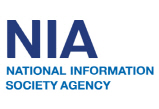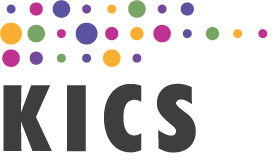Now 102 visitors
Today:190 Yesterday:1497
Total: 44001
241S 56P 13R
2025-11-03, Week 45 |
| TACT Journal Page |
| Call for Paper |
| Author Homepage |
| Paper Procedure |
| Paper Submission |
| Registration |
| Welcome Message |
| Statistics |
| Committee |
| Paper Archives |
| Outstanding Papers |
| Author Homepage |
| - Paper Procedure |
| - Journal Procedure |
| - Presentation Tips |
|
| Proceedings |
| Program with Papers |
| Plenary Session |
| Tutorial Session |
|
| Presentation Assistant |
| Hotel & Travel Info |
| About Korea |
| Accommodation |
| Transportation |
| VISA |
| Other Infomation |
|
| Photo Gallery |
| FAQ |
| Member Login |
| Scheduler Login |
| Seminar |
| Archives Login |
|
| Sponsors |

|

|

|

|

|

|

|

|

|

|
|
|
|
|
| Save Q&A |
 |
* Edit or answer any Q&A by selecting Q&A number Hyper Link below + Write button (Save)
|
 ICACT20220184 Question.1
ICACT20220184 Question.1
Questioner: n.khattab@nu.edu.eg 2022-02-14 오후 9:12:28 |
 ICACT20220184 Answer.1 ICACT20220184 Answer.1
Answer by Auhor gmpdf.7704@ruri.waseda.jp 2022-02-14 오후 9:12:28
Chrome  Click!! Click!! |
| Hello,
First of all, you have presented good work, thanks a lot for that. However, I have some questions.
First, Based on your system model, the receiver (terrestrial user) applies a number of M-1 SIC processes in order to get its intended message.
so my question is; would the receiver capabilities could handle this amount of complexity?
putting into consideration the channel estimation to get a proper CSI, in order to assume perfect/imperfect CSI?
Dear Author, thank you for your presentation. Do you have any plans for future work, such as deploying your algorithm in real network? |
Thank you for your question.
As you mentioned, one of the concerns of our method is the complexity of the reception process due to the increasing number of users.As a solution method, many attempts to reduce the complexity of DSSS receivers and channel estimators have been studied, and we plan to implement and verify these techniques. Also, as mentioned in the full paper, the simulations in this study were performed assuming perfect CSI. As a next step, the introduction of imperfect CSI will allow us to obtain verification results that are closer to reality.
To date, we know that when errors are caused by imperfect CSI at higher power levels, the errors propagate to users at lower power levels. In other words, a simple model such as the one proposed in this paper would be unfair to users at lower power levels. Therefore, based on the theory of PDMA, users who fail to demodulate are assigned to a higher power level, and thus a higher QoS, in the subsequent time slot. The idea is to try to improve the quality of reception by doing this. |
 ICACT20220184 Question.2
ICACT20220184 Question.2
Questioner: n.khattab@nu.edu.eg 2022-02-14 오후 12:14:33 |
 ICACT20220184 Answer.2 ICACT20220184 Answer.2
Answer by Auhor gmpdf.7704@ruri.waseda.jp 2022-02-14 오후 12:14:33
Chrome  Click!! Click!! |
| my second question is concerning Figure 12. the figure shows that a clear winner in this comparison is using NOMA although DSSS-PDMA increases over it a little for U-31. So what about the BER comparison between FDMA, NOMA and DSSS-PDMA? would your proposed MA achieve better performance than the others? |
Many thanks for your questions, it shows that when U is greater than 31, more users than NOMA can be communicated with efficiently. This matches the use case of 5G NR technology, mMTC. On the other hand, as answered in the first question, the larger the number of users, the larger the BER in demodulating users with lower power levels.
Assuming perfect CSI, the BER of the three types of multiple access schemes would be similar. However, if we assume imperfect CSI, the BER of the DSSS-PDMA scheme will be worse.
One way to improve the BER of DSSS-PDMA is to set the number of power levels and power difference appropriately. This is a multiple access method that we have just started to verify, and many verifications and experiments such as the optimal setting values are urgently needed. |
 ICACT20220184 Question.3
ICACT20220184 Question.3
Questioner: tomayoon@ieee.org 2022-02-14 오후 12:30:25 |
 ICACT20220184 Answer.3 ICACT20220184 Answer.3
Answer by Auhor gmpdf.7704@ruri.waseda.jp 2022-02-14 오후 12:30:25
Chrome  Click!! Click!! |
| First of all, thank you for the good research paper and presentation contents. I would like to know more about the research environment used in this study, and also in detail about the operating systems, development languages and software libraries you used. |
Thank you for your question.
In our study, we used MATLAB and Python language to perform the simulation. Many of the tools and libraries we used are publicly available in MATLAB. We ran our code on Windows, MacOS and Debian environments. |
 ICACT20220184 Question.4
ICACT20220184 Question.4
Questioner: namacabale@gmail.com 2022-02-15 오후 6:00:57 |
 ICACT20220184 Answer.4 ICACT20220184 Answer.4
Answer by Auhor gmpdf.7704@ruri.waseda.jp 2022-02-15 오후 6:00:57
Chrome  Click!! Click!! |
| Dear Author, you have a very good research. However, since you did your study through simulation, is the technology today capable of implementing your proposed algorithm? Is there an existing technology almost similar to your proposal that has been deployed in real world environment? Thank you and stay safe. |
Thank you for your question. It's an honor.
Our research proposes a method that combines DSSS and PDMA technologies, DSSS technology was used in real life, such as DS-CDMA technology for 3G mobile communication, PDMA technology uses an algorithm similar to NOMA technology for 5G mobile communication, so it should be easy to implement it.
However, it is important to mention that there is no mechanism that combines the two yet, and there are still many obstacles that we need to overcome. We are currently working with NICT on research and development. We are planning to continue our research and at the same time verify the system using actual devices. |
 ICACT20220184 Question.5
ICACT20220184 Question.5
Questioner: dlgusdn2@kaist.ac.kr 2022-02-15 오후 6:24:38 |
 ICACT20220184 Answer.5 ICACT20220184 Answer.5
Answer by Auhor gmpdf.7704@ruri.waseda.jp 2022-02-15 오후 6:24:38
Chrome  Click!! Click!! |
| What is the major achievement of this paper, and also what is further study issue from this? |
Thank you for your question. There are two main achievements for us.
The first achievement is interference reduction. Our research proposes to install new small earth stations in the environment of terrestrial 5G networks. When deploying earth stations, we need to be very careful not to affect the 5G terminals that are already communicating as much as possible. Therefore, we have achieved peak power reduction by introducing spread spectrum technology. We also found that high spectral utilization efficiency can be achieved compared to existing multiple access methods by using Gold codes.
The second is to improve the spectrum utilization efficiency. Spreading code division and power level division make it possible to multiplex a large number of users into the same bandwidth. In anticipation of the further increase in communication in the next generation of networks, we need to consider the effective use of radio waves, which are an important resource. In the future, we plan to verify the effects of interference on terrestrial 5G networks through demonstration experiments, and to replicate the DSSS-PDMA processing scheme in practice. |
| |






